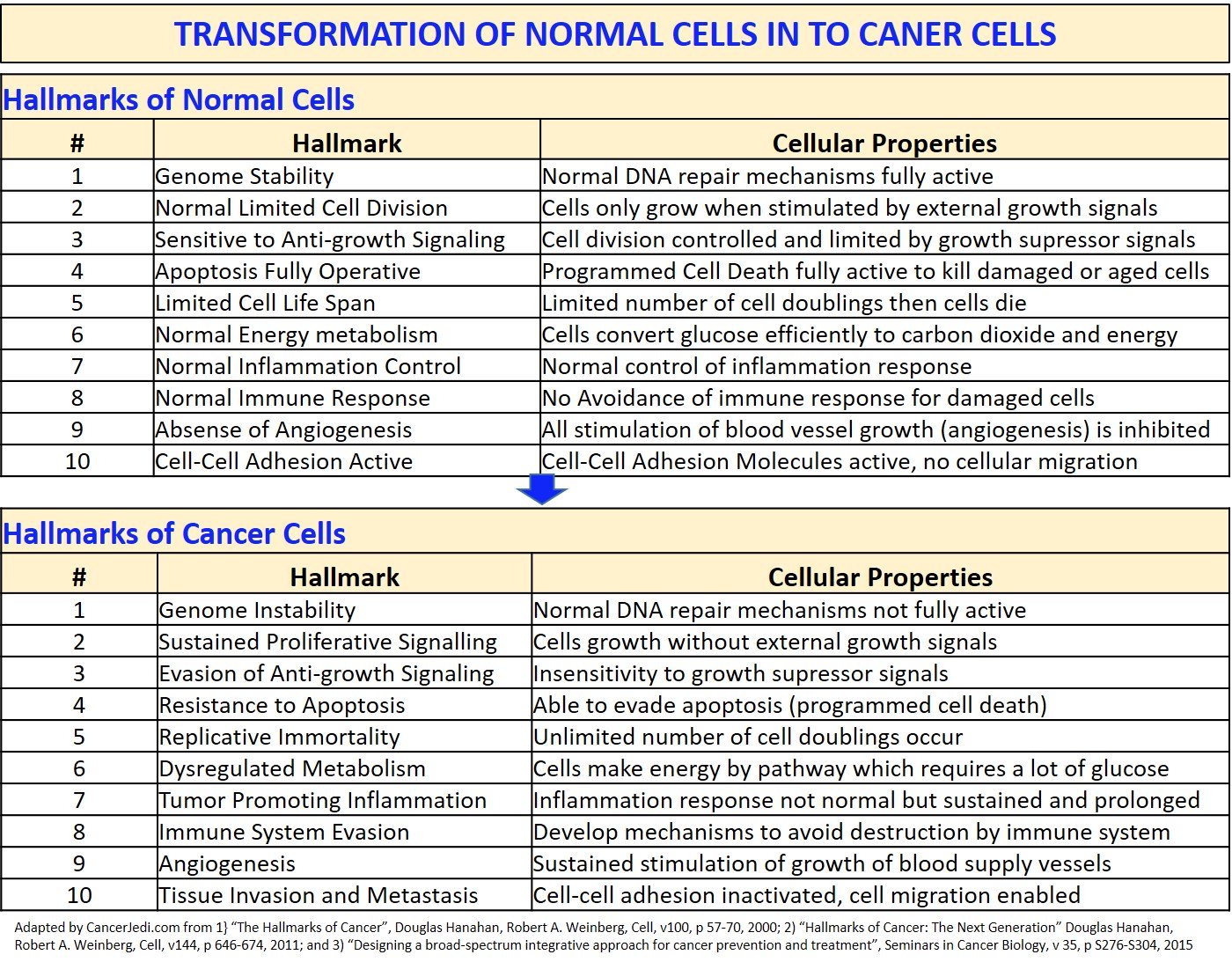What Is Cancer?
What is a Normal Cell?
How Does it Become Cancer?
What is Cancer? Our goal here is to provide you with enough basic information on cellular properties to enable you to understand what cancer is, how a cancer cell differs from a normal cell, and to give you a basis for understanding how the various proposed treatment options will act on your cancer.
You do not have to become a scientist or a geneticist but it is important to understand what cancer is and how it originates and progresses. You need to learn what a normal cell is and how a normal cell becomes a cancer cell.
What Is Cancer?
Sources of Information
The description of “What Cancer Is” that we present here is our summary taken from three scientific papers:
- “The Hallmarks of Cancer”, Hanahan, Douglas and Robert A. Weinberg, Cell, v100, 57-100 (2000)
- “Hallmarks of Cancer: The Next Generation”, Hanahan, Douglas and Robert A. Weinberg, Cell, v144, 646-674 (2011)
- “Designing a Broad-Spectrum Integrated Approach for Cancer Prevention and Treatment”, Block, Keith, et al., Seminars in Cancer Biology, v35, 5276-5304 (2015)
The first two papers by Hanahan and Weinberg have collectively been cited in other cancer research papers more than fifteen thousand times. Most authors of scientific papers do not get that many citations for all their papers published in their entire careers. These two papers are that critical to the current thinking on cancer. The third paper, authored by Keith Block (Block Center for Integrative Cancer Treatment), simplifies and summarizes Hanahan and Weinberg’s Hallmarks of Cancer and presents them as a framework for developing integrated cancer treatment options.
What is Cancer?
Normal Cells to Cancer Cells
A normal cell has all the inbuilt (genetic) regulation and feedback control systems to keep functional without growing and dividing in a manner that causes harm to its neighboring cells and the organ of which it is a part.
A normal cell becomes a cancer cell when by a series of mutations (changes in the DNA-genes) the inbuilt regulation and control systems are damaged or inactivated in such a way that the cell exhibits one or more of the ten “Hallmarks of Cancer”. These mutations occur sequentially in many different sequences over years to decades resulting eventually in a diagnosis of cancer.
The table below is based on a simplification of the information contained in the three scientific papers discussed above and summarizes the transformation of a normal cell into a cancer cell which exhibits all the “Hallmarks of Cancer”.

A more in depth discussion and explanation of the steps involved in converting a normal cell into a cancer cell can be found on our What Are Cancer Cells and Learn About Cancer pages.
As you will learn in other pages of our website, the above understanding of cancer at the cellular and genetic level is the basis for many of the state of the art diagnostic tests, treatments and therapies which the Best Cancer Doctors at the Best Cancer Centers will recommend. And they are the basis for the success of many of the Cancer Survivor Stories we share with you which will form the basis of the hope that will be the foundation of your victory over cancer.